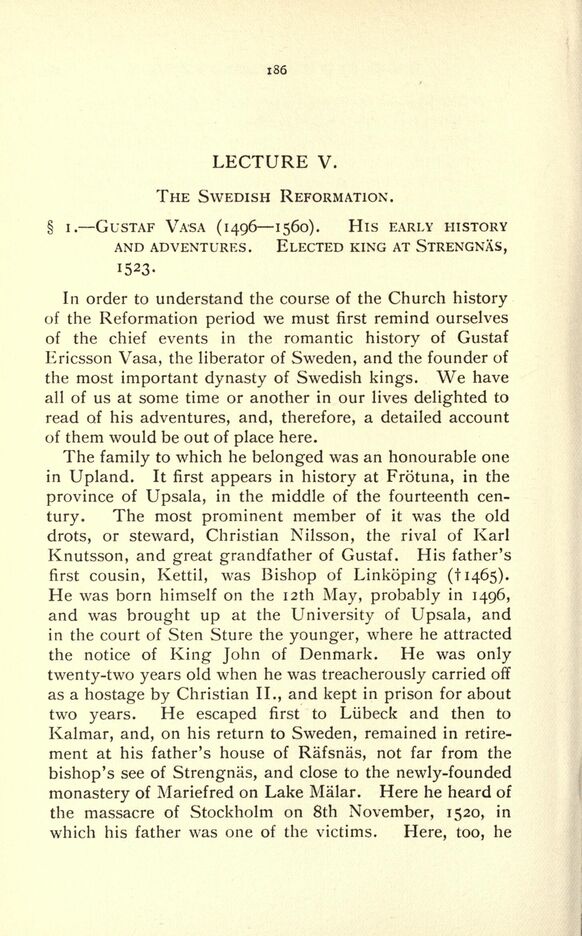
Full resolution (JPEG) - On this page / på denna sida - V. The Swedish Reformation under Gustaf Vasa and his sons Eric and John (1520—1592 A.D.)

<< prev. page << föreg. sida << >> nästa sida >> next page >>
Below is the raw OCR text
from the above scanned image.
Do you see an error? Proofread the page now!
Här nedan syns maskintolkade texten från faksimilbilden ovan.
Ser du något fel? Korrekturläs sidan nu!
This page has never been proofread. / Denna sida har aldrig korrekturlästs.
1 86
LECTURE V.
THE SWEDISH REFORMATION.
i. GUSTAF VASA (1496 1560). His EARLY HISTORY
AND ADVENTURES. ELECTED KING AT STRENGNAS,
I523.
In order to understand the course of the Church history
of the Reformation period we must first remind ourselves
of the chief events in the romantic history of Gustaf
Ericsson Vasa, the liberator of Sweden, and the founder of
the most important dynasty of Swedish kings. We have
all of us at some time or another in our lives delighted to
read of his adventures, and, therefore, a detailed account
of them would be out of place here.
The family to which he belonged was an honourable one
in Upland. It first appears in history at Frotuna, in the
province of Upsala, in the middle of the fourteenth cen
tury. The most prominent member of it was the old
drots, or steward, Christian Nilsson, the rival of Karl
Knutsson, and great grandfather of Gustaf. His father s
first cousin, Kettil, was Bishop of Linkoping (11465).
He was born himself on the I2th May, probably in 1496,
and was brought up at the University of Upsala, and
in the court of Sten Sture the younger, where he attracted
the notice of King John of Denmark. He was only
twenty-two years old when he was treacherously carried off
as a hostage by Christian II., and kept in prison for about
two years. He escaped first to Llibeck and then to
Kalmar, and, on his return to Sweden, remained in retire
ment at his father s house of Rafsnas, not far from the
bishop s see of Strengnas, and close to the newly-founded
monastery of Mariefred on Lake Malar. Here he heard of
the massacre of Stockholm on 8th November, 1520, in
which his father was one of the victims. Here, too, he
<< prev. page << föreg. sida << >> nästa sida >> next page >>